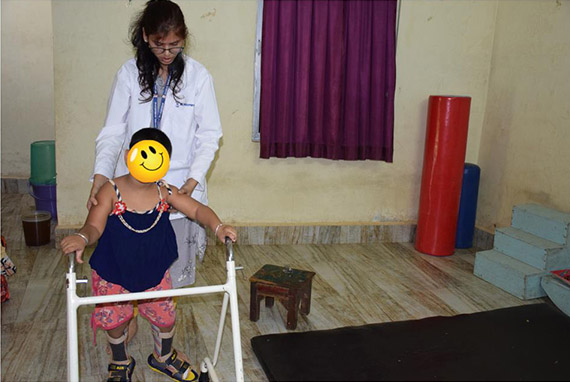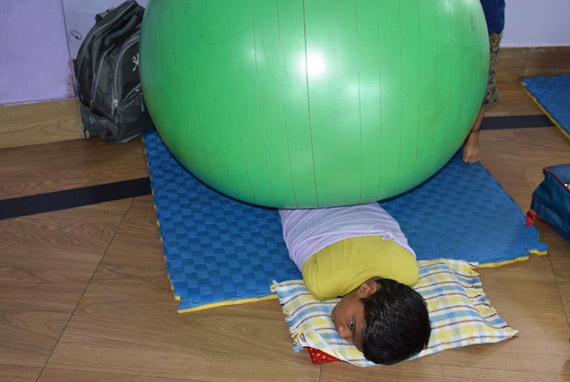Ready to Break Free from Cerebral Palsy Challenges? Book Your Appointment Now at Margdarsi – Only Rs 500 for Life-Changing CP Treatment!.
Limited MobilityEveryday tasks become monumental challenges.
Speech ImpairmentsDifficulty in expressing thoughts and feelings.
Muscle SpasmsUncontrollable muscle movements hindering daily life.
Lack of IndependenceDependency on others for routine activities.
Emotional StrainCoping with the emotional impact of living with Cerebral Palsy.

Living with Cerebral Palsy is tough. Simple tasks can feel like climbing mountains. At Margdarsi, we get it. We know the daily struggles you face, and we're here to help you overcome them. Don't let the challenges hold you back. Choose Margdarsi, the best Cerebral Palsy clinic in Odisha, because you deserve a life without limits.
Imagine a life where every day is a battle, where progress seems impossible. Without proper Cerebral Palsy treatment, the loss is profound – missed opportunities, unfulfilled dreams, and the constant struggle. Don't let Cerebral Palsy dictate your journey. Choose Margdarsi, the best Cerebral Palsy clinic in Odisha, and regain control over your life. The loss without treatment is far too great to ignore.
Expert Care: Our team of specialists is committed to providing the highest quality care tailored to your needs.
Personalized Approach: No two individuals with Cerebral Palsy are the same. That's why our treatments are personalized just for you.
Cutting-edge Technology: Margdarsi is equipped with state-of-the-art technology to ensure you receive the best possible care.
Compassionate Team: We understand the emotional challenges you face. Our compassionate team is here to support you every step of the way.
Proven Results: Margdarsi has a track record of success stories for successful Cerebral Palsy Treatment in India.
Welcome to Margdarsi, where we redefine possibilities and bring hope to those facing Cerebral Palsy. We take pride in being the best CP clinic in Odisha, committed to making a positive impact in every life we touch.
Margdarsi's journey began with a simple yet powerful mission - to provide exceptional care for individuals with Cerebral Palsy. Our founders envisioned a place where people could find the support, they need to lead fulfilling lives despite the challenges.
At Margdarsi, we stand out as the best CP clinic in Odisha for a simple reason - we care deeply. Our dedicated team combines expertise with genuine compassion, ensuring that you receive not just treatment but a holistic experience for the Cerebral Palsy Treatment in India.
The true measure of our success lies in the smiles of our happy customers. Meet individuals who have not just undergone Cerebral Palsy Treatment in India but have embraced life with newfound confidence. They are the living testament to why Margdarsi is the best CP clinic in Odisha.
Affordable care is at the heart of Margdarsi. For just Rs 500, you can consult with our experts and start your journey towards improvement. We believe that quality care should be accessible to all, and our consultation fee reflects that commitment.
Affordability: Quality care shouldn't come with a hefty price tag. Our services are accessible to all with our affordable consultation fee of Rs 500.
Expert Team: Our specialists are not just experts in their field; they are passionate about making a positive impact in the lives of those with Cerebral Palsy.
Holistic Approach: We address not just the physical challenges but also the emotional and psychological aspects, ensuring a comprehensive treatment experience.
Proven Track Record: Our success stories speak for themselves. Join the ranks of those who have found success and happiness at Margdarsi.

Take the First Step Towards Progress! Secure Your Appointment for Expert CP Treatment at Margdarsi - Affordable at Just Rs 500. Your Journey to a Better Life Starts Here!.
Personalized Therapies:Tailored treatments addressing specific challenges.
Affordable Care:Quality CP treatment at an accessible Rs 500 consultation fee.
Expert Team:Compassionate specialists dedicated to your progress.
Holistic Approach:Comprehensive care addressing physical, emotional, and psychological aspects.
Proven Results:Join the success stories of those who've found triumph at Margdarsi.